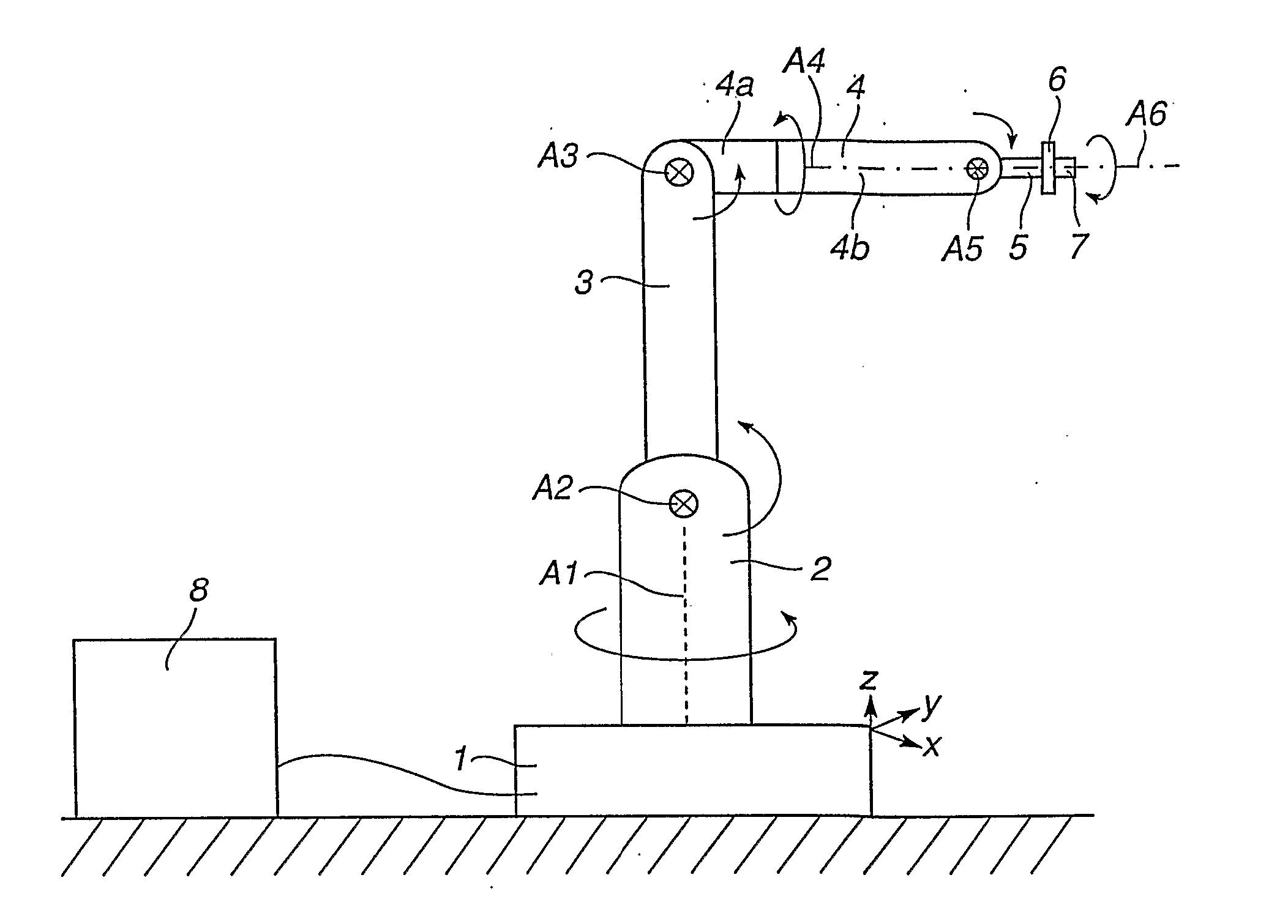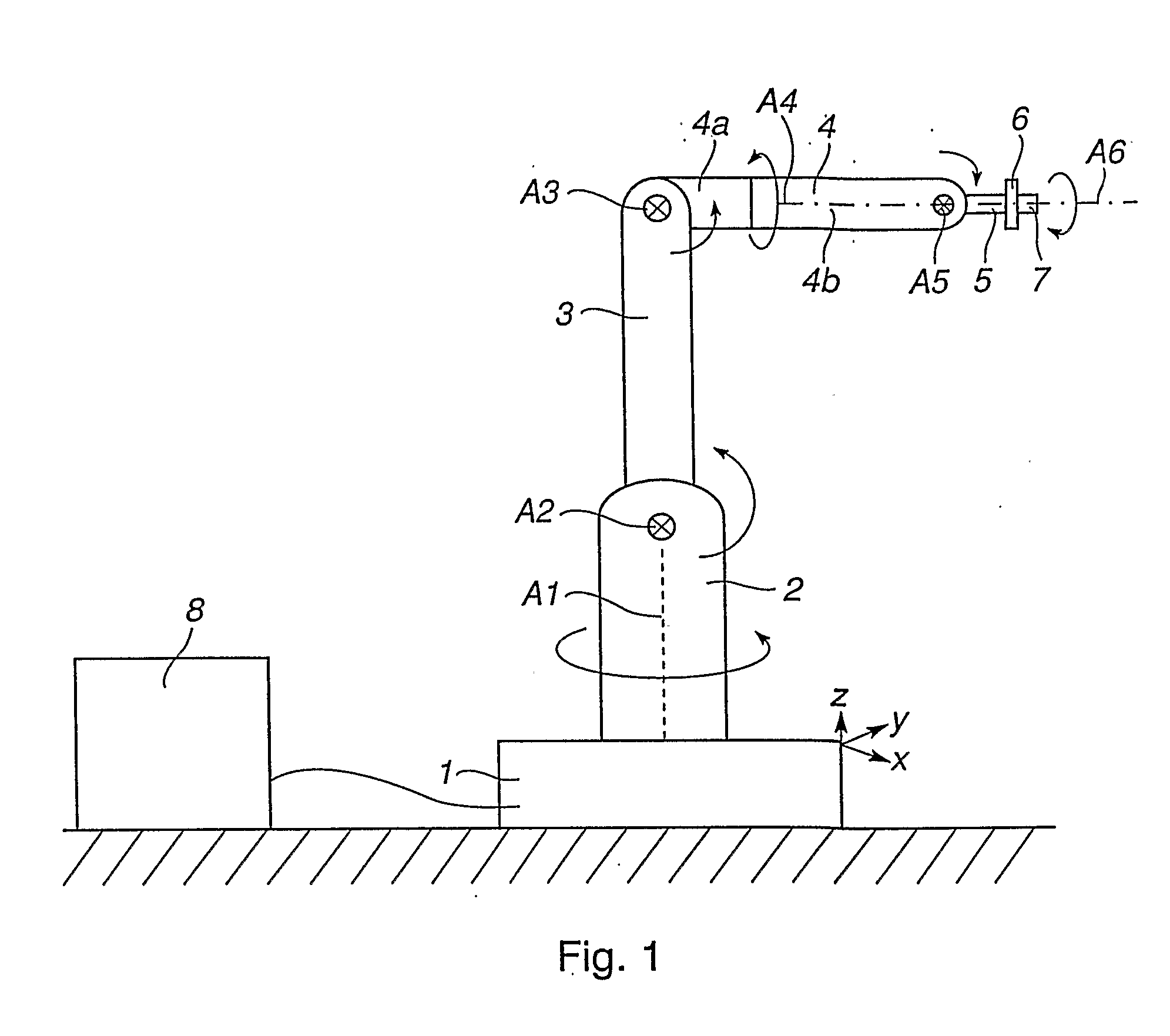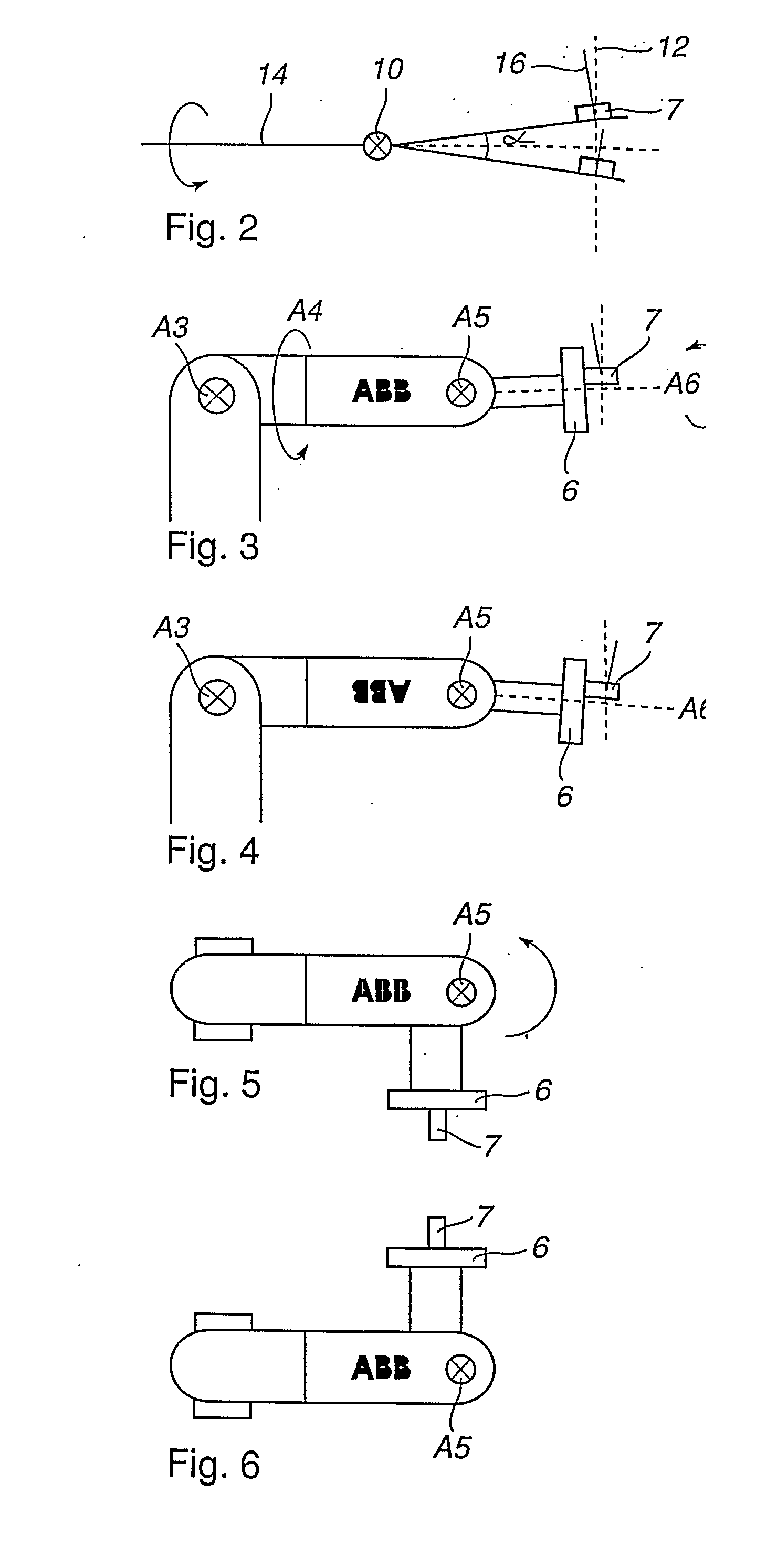Calibration Method
a technology for industrial robots and calibration methods, applied in calibration apparatuses, programs, instruments, etc., can solve problems such as errors between correct kinematic robot positions, robot behavior not as correct as possible, and errors related to different sets of calibration equipment, so as to minimize the influence of the mounting of the calibration devi
- Summary
- Abstract
- Description
- Claims
- Application Information
AI Technical Summary
Benefits of technology
Problems solved by technology
Method used
Image
Examples
Embodiment Construction
[0032]FIG. 1 shows an example of a 6-axis industrial robot standing in a traditional calibration position, also denoted the home position of the robot. The robot comprises a base 1, which is firmly mounted on a foundation. The robot further comprises a stand 2, which is rotatable relative to the base 1 around a first vertical axis A1. In the top end of the stand 2, a first robot arm 3, is rotatably mounted about a second horizontal axis A2. In the outer end of the first arm 3, a second arm 4 is rotatably mounted relative to the first arm about a third axis A3. The second robot arm 4 comprises two parts, 4a and 4b, and the outer part 4b being rotatable relative to the inner part 4a around a fourth axis A4 coinciding with the longitudinal axis of the second arm 4. In its outer end, the second arm 4 supports a so-called robot hand 5, which is rotatable about a fifth axis A5, which is perpendicular to the length axis of the second arm 4. The robot also comprises a tool attachment 6 in t...
PUM
 Login to View More
Login to View More Abstract
Description
Claims
Application Information
 Login to View More
Login to View More - R&D
- Intellectual Property
- Life Sciences
- Materials
- Tech Scout
- Unparalleled Data Quality
- Higher Quality Content
- 60% Fewer Hallucinations
Browse by: Latest US Patents, China's latest patents, Technical Efficacy Thesaurus, Application Domain, Technology Topic, Popular Technical Reports.
© 2025 PatSnap. All rights reserved.Legal|Privacy policy|Modern Slavery Act Transparency Statement|Sitemap|About US| Contact US: help@patsnap.com



